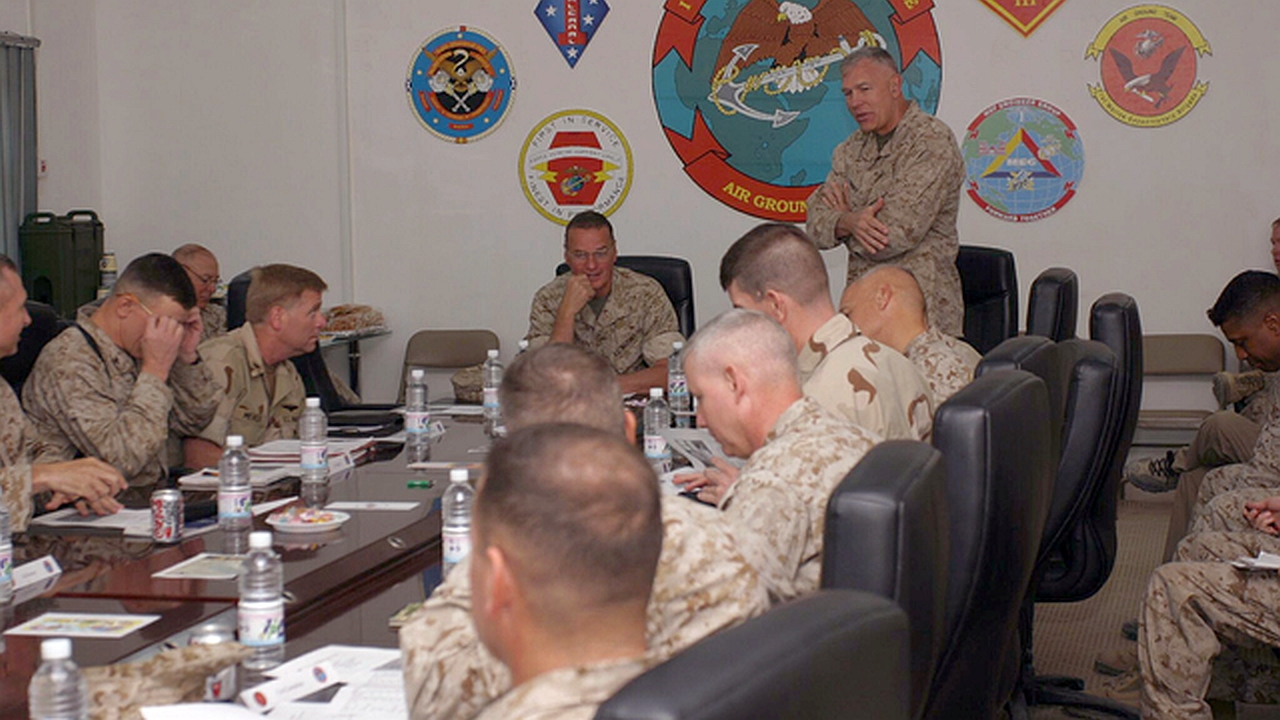
Organization Management Rhythm: Foreword and Overview
Efficient meeting management for effective knowledge sharing, knowledge management, and decision-making
This article is the foreword and overview of a series of articles on Organization Management Rhythm.
Using the Operational Management Rhythm approach of the U.S. military, this series focuses on meeting management and how it influences companies pertaining to the knowledge management field.
The military is a useful source of knowledge management (KM) tools and approaches that can be widely applied in organizations. Other examples include the After Action Review (AAR) and OODA loop.
In this series, I review the decision-making process and demonstrate how to prioritize different types of meetings to determine the critical paths needed to make essential decisions in the workplace. I explain:
- The different types of meetings as described by Lucid Meetings (the 16 types of business meetings) and the U.S. military, and meeting rules.
- Organization Management Rhythm, which is the deliberate cycle of staff and operational activities intended to synchronize current and future operations. The military calls this a Battle Rhythm (JP 3-33, 2018). This is called Organization Management Rhythm in a nonmilitary realm. A good rhythm enables knowledge sharing, knowledge management, and decision-making. It does this through situation awareness of what other staff elements are doing, allowing a future plan to be developed. This requires meetings to be established for a specific purpose, and it gives staff and management time to coordinate and work on tasks they have been assigned. It ensures that only the correct people are at a meeting. It is a dynamic way to ensure that everyone knows what is expected of them at all times. It defines, measures, analyzes, improves, and controls when, how, and why meetings take up valuable time.
- The Organization Rhythm Change Management (ORCM) process, the purpose of which is to establish a codified, repeatable procedure for the adjudication of requests to modify the Organization Management Rhythm. This process is necessary in order to effectively manage the day-to-day organizational rhythm of the staff and ensure the information exchange requirements are delivered in a timely and effective manner. This process is designed to be both agile and enduring in that it can accommodate the full range of organization rhythm changes (i.e., one time temporary changes through to permanent additions/modifications of organization rhythm events).
- The different models that various organizations search for and use for how to create an effective rhythm of business or Organization Management Rhythm. Each has its pros and cons. Each is aided by documents and software used to create tools, linkages, and metrics. Some of these models are available as a software suite.
- Organization Management Rhythm products. This is a set of tools developed by different Department of Defense organizations. It allows for quick results. The metrics are shown from hours spent in each meeting to how the meetings and information exchange requirements support the decision process. When the entire organization is synced to the same calendar and uses it to judge when products should be reviewed, it eliminates the redundancy of work that is caused by mismatched rhythms. Organizations can then define the objectives they wish to achieve within a given time and create the tasks needed to accomplish them. This allows for example the planning of a release date or the launch of a new Christmas toy in October instead of early December. Each Organization Management Rhythm should have the strategy, vision, objectives, and tasks that define it laid out early in the process.
- Initial Organization Management Rhythm analysis, which focuses on discovering the existing processes and products used to inform decision-making. Once an existing Organization Management Rhythm is identified, a detailed assessment is conducted consisting of a series of questions designed to highlight shortcomings or gaps in Organization Management Rhythm knowledge sharing and manageability. The products of the analysis model serve as both assessment and management tools.
- The implementation of change. A systematic implementation plan defines the realities of the current Organization Management Rhythm, articulates the advantages of the proposed Organization Management Rhythm, and provides details of the transition making leadership comfortable and allowing them to foster change. Change in any organization is difficult, so buy-in from key players throughout the organization is critical to a successful Organization Management Rhythm implementation. Stakeholders who see the benefit become advocates and provide the tipping point that leadership needs to take ownership.
- Ongoing management. Organizational information exchange requirements do not remain static. Transitions between operational phases, modification of objectives, and leadership changes, among other activities, should prompt a review of the effectiveness of the Organization Management Rhythm. The products of the Organization Management Rhythm analysis process supporting model serve as the management tool for organization leadership to determine how new information exchange requirements can be integrated into the current Organization Management Rhythm and when refinement is necessary.
Next part (part 1): Introduction and types of meetings.
Acknowledgements: Thank you to Tomi Antill, Keith Davis, Elise Keith from Lucid Meetings, JFHQ-C Leadership, and Kendra Albright from Kent State University, without whose support this series would not have been possible.
Header image source: U.S. National Archives, Public Domain.






